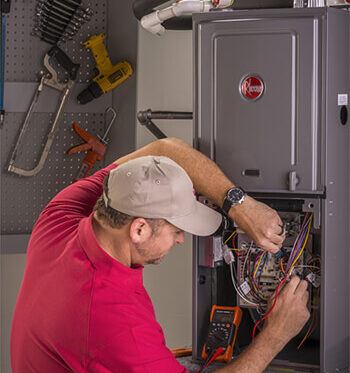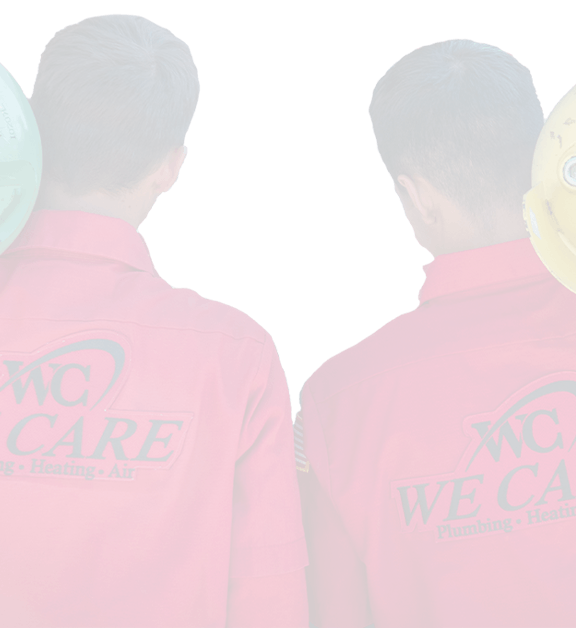The furnace represents a crucial part of the home heating system. As a major appliance, the furnace is responsible for generating heat that ducts then distribute throughout the building. According to the U.S. Environmental Information Association (EIA), over 40% of Americans use gas furnaces in their home, and another 36% of U.S. residents have electric furnaces. With consistent maintenance, the average furnace can last up to 20 years. However, defects within the unit can compromise its performance and shorten its lifespan. Fortunately, there are telltale signs and red flags that can indicate that your appliance needs servicing or repairs. Here are some of the top warning signs that your furnace requires immediate attention; they can help ensure that your system works well all season long.
1. High Heating Bills
According to the U.S. Department of Energy, over 50% of the average household’s energy expenses go toward heating and cooling costs. For this reason, it is understandable that homeowners want to keep their units running as efficiently as possible. When a furnace has a defect, it often has to work harder to maintain consistent indoor temperatures. This causes the unit to draw more power from the grid, and it can ultimately increase energy bills. If you notice higher utility bills for no apparent reason, it could be a sign that your furnace needs a tune-up. An HVAC professional can inspect your furnace and determine whether this appliance is the culprit.
2. Yellow Pilot Light
A yellow pilot light may seem like a minor nuisance, but it could indicate a potentially deadly problem. During normal furnace operation, the pilot light should display a bright or vivid blue flame. This blue color shows that all gas is combusting properly. In contrast, a yellow flame indicates partial or incomplete combustion. This incomplete combustion can be the result of a dirty burner or cracked air intake valve. It can also result from a blockage to your burner assembly. Regardless of the specific cause, incomplete combustion is dangerous because it can lead to an accumulation of carbon monoxide gas. Carbon monoxide is a tasteless, odorless and colorless gas that can be lethal if inhaled in high concentrations. If you notice a yellow pilot light, turn off the unit and contact an HVAC professional immediately. A qualified technician can repair or replace the unit, thereby restoring the appropriate ratio of fuel and air necessary for successful combustion.
3. Strange or Unpleasant Smells
When you turn on the furnace for the first time of the season, you may notice a slight smell as dust falls off of unused parts. Experts advise that this smell should dissipate after a few hours. If you continue to smell foul odors from your HVAC appliance, however, it is time to seek professional intervention and care. While bad odors could result from something as simple as dirty filters, the smells could also indicate serious dilemmas, like broken elements, within the furnace.
For example, a scorched or metallic burning smell could be a sign of a damaged heat exchanger. The heat exchanger is a metal device responsible for transferring thermal energy. It helps circulate warm air throughout the home. If it is cracked or damaged, it needs to be addressed immediately or the entire unit may stop working. A burning smell can also indicate an overheated blower motor. A technician can check and repair the motor so that it does not burn out completely. Burning plastic smells can indicate the melting of electric wiring, and a technician will need to investigate to prevent potential electric fires. Finally, a rotten egg smell is a serious concern that can indicate a natural gas leak. If you notice a sulfurous or egg odor, turn off the unit and call an HVAC company for help.
4. Unusual Noises
Strange noises require attention because they often indicate an internal malfunction that can escalate into a much bigger problem. For example, a scraping or wobbling noise can mean that your blower motor bearings need repair. An HVAC professional can often lubricate these parts so that they do not damage other parts of your system. If the motor is past a certain age or damaged beyond repair, the technician may need to replace the part itself. Similarly, rattling noises can indicate a loose screw or fan blade, and a screeching or squealing noise can be a sign of a worn-out belt. A technician can replace these parts. Bubbling or gurgling noises can signify trapped air within pipes. This blocks the flow of heat and can cause your unit to work harder to distribute warm air to the home. Finally, banging or clanging noises could indicate the impending failure of the blower motor itself, so it is wise to seek expert intervention to avoid a complete system shutdown.
5. Insufficient Airflow
Insufficient airflow prevents the furnace from doing its job of delivering warm air to the ductwork for delivery throughout the home. Factors that influence airflow can include dirty furnace filters or a clogged blower fan. If left uncorrected, poor airflow can create uneven temperatures throughout the home. It can also reduce indoor air quality due to inadequate circulation of treated air. This means that dust, bacteria and other airborne contaminants can remain stagnant in various rooms. Finally, insufficient airflow can create backups that significantly damage the HVAC unit. If you notice a lack of airflow from vents, contact a professional to diagnose the issue and restore output.
6. Visible Signs of Corrosion
Corrosion occurs when the oxygen in water reacts with metal. Any presence of corrosion, rust, pitting or discoloration can indicate unwanted moisture in your HVAC unit. This is a safety hazard and can also permanently damage the appliance. An HVAC technician can identify the source of the excess moisture and complete repairs.
7. High Levels of Soot
The presence of soot can signify major problems with your overall furnace system. If your furnace is new, soot is usually a sign of improper installation. Excessive soot can prematurely age the parts of a newer unit, so a technician needs to correct the poor installation and protect your recent investment. If you have owned the furnace for a while, soot can also arise as a by-product of poor combustion. This soot can accumulate on the flame sensor and cause damage. If enough soot blocks the flame sensor, the sensory device will no longer be able to detect whether your burners have lit up. This causes your unit to work harder to heat your home, and it can also create a major safety hazard if the burners repeatedly attempt to ignite. Since soot is a major indoor pollutant that can cause respiratory damage, you should never procrastinate in correcting this issue within the home.
8. Constant Short-Cycling
Short-cycling occurs when the furnace repeatedly turns on and off but fails to reach the household’s thermostat temperature settings. When your furnace does not complete a full cycle, the constant restarts can draw significant power and strain your entire HVAC system. This can increase energy bills and warrant the premature replacement of your appliance. The cause of short-cycling can include anything from faulty parts to improper HVAC sizing. Allow a professional to evaluate the issue and eliminate short-cycling within the home.
Contact Us Today
Understanding signs of imminent furnace trouble can save you from heating emergencies down the line. If you notice symptoms of furnace complications, reach out to the experts for help. We Care Plumbing, Heating and Air offers furnace maintenance and repair services for homes in Temecula, Murrieta, Orange, San Marcos and surrounding areas. Our technicians can install new furnaces or troubleshoot problems with existing units. We also service heat pumps and can diagnose all winter indoor air quality (IAQ) issues. Ask your technician about setting up a zone-controlled HVAC system or ductless mini-splits. No matter the HVAC question, we have your answers covered. Contact We Care for all heating system needs.






